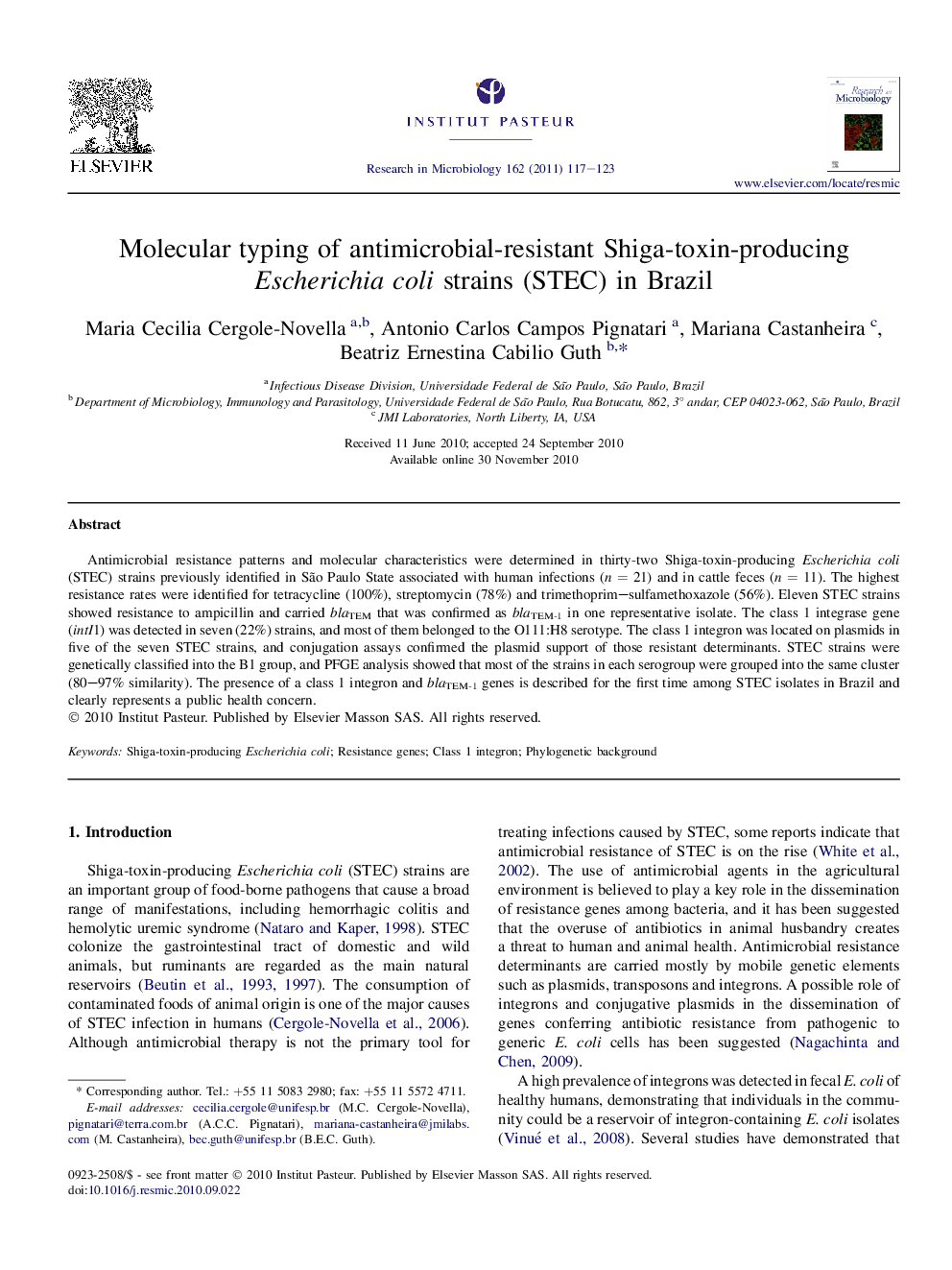| Article ID | Journal | Published Year | Pages | File Type |
|---|---|---|---|---|
| 6288179 | Research in Microbiology | 2011 | 7 Pages |
Abstract
Antimicrobial resistance patterns and molecular characteristics were determined in thirty-two Shiga-toxin-producing Escherichia coli (STEC) strains previously identified in São Paulo State associated with human infections (n = 21) and in cattle feces (n = 11). The highest resistance rates were identified for tetracycline (100%), streptomycin (78%) and trimethoprim-sulfamethoxazole (56%). Eleven STEC strains showed resistance to ampicillin and carried blaTEM that was confirmed as blaTEM-1 in one representative isolate. The class 1 integrase gene (intI1) was detected in seven (22%) strains, and most of them belonged to the O111:H8 serotype. The class 1 integron was located on plasmids in five of the seven STEC strains, and conjugation assays confirmed the plasmid support of those resistant determinants. STEC strains were genetically classified into the B1 group, and PFGE analysis showed that most of the strains in each serogroup were grouped into the same cluster (80-97% similarity). The presence of a class 1 integron and blaTEM-1 genes is described for the first time among STEC isolates in Brazil and clearly represents a public health concern.
Keywords
Related Topics
Life Sciences
Immunology and Microbiology
Applied Microbiology and Biotechnology
Authors
Maria Cecilia Cergole-Novella, Antonio Carlos Campos Pignatari, Mariana Castanheira, Beatriz Ernestina Cabilio Guth,
